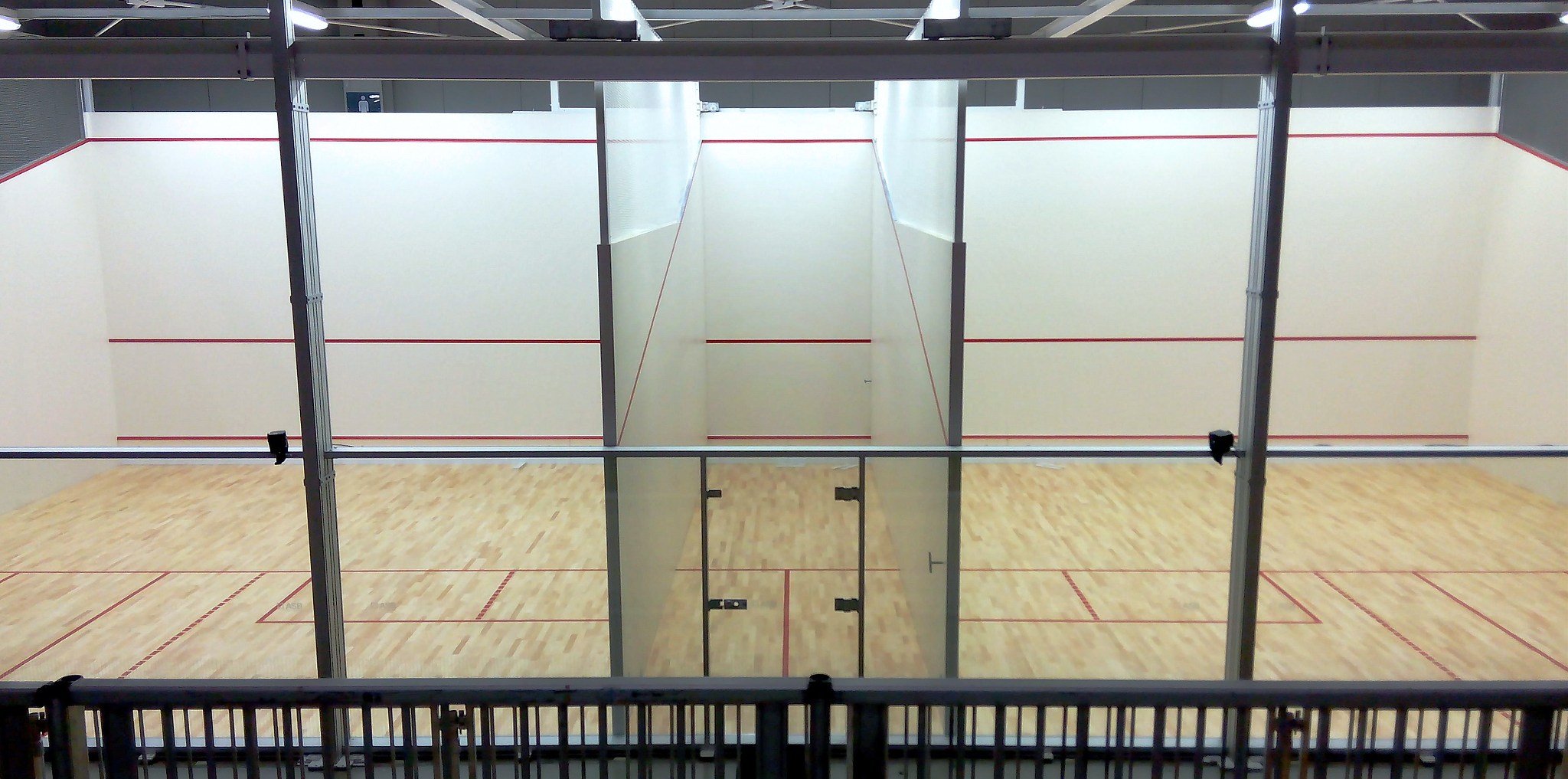Premium Engineered Sports Board vs Solid Timber
This page highlights the benefits of using a DYNAMIK premium engineered sports board compared to a solid timber board.
Typical Construction of Timber Floors
Premium Engineered Sports Board with a Plywood Core – manufactured to combine a solid hardwood upper layer with a high density multi-layer plywood core. The high density multi-layer core provides superior indentation resistance and high dimensional stability, especially within large sports hall environments.
Premium Engineered Sports Board with a Softwood Core – manufactured to combine a solid hardwood wear layer with a softwood core.
Solid Timber Board – typically 22mm thick made from narrow staves of timber joined by a T & G joint.
Sanding and Re-sealing
Premium engineered sports boards, when compared to solid timber boards, are 7 times more dimensionally stable when exposed to changes in temperature and humidity.
As illustrated below, solid timber boards cup and curl at the board edges as they expand and contract. Therefore you need to sand off the peaks to get to the scratches in the hollows. A consequence of this is that a typical sand and re-seal on a solid timber floor will be more frequent and will actually bite into and consume more of the hardwood.


Premium engineered sports boards do not cup and curl, therefore you only need to abrade the surface to remove scratches and consume little, if any, of the hardwood (3 sands in 30 years, i.e. YR10/20/30). As a comparison, solid timber requires more frequent sanding (up to 9 sands) which adds to life cycle costs.
Appearance, Aftercare & Maintenance
Because a solid timber floor suffers greater expansion and contraction, a typical installation needs to include ‘washer gaps’ every 4 boards to take up some of the expected expansion. Engineered premium sports boards only require a perimeter expansion gap. Aesthetically, these gaps look unattractive and are a trap for moisture and dirt. The latest trend is to install premium engineered sports boards into dance or activity suites as the surface is smooth, without gaps, allowing users to slide across the sports floor without issue.
Timber Species
Premium engineered sports boards come in a greater variety of wood species including European Oak, Canadian Maple, Beech and Ash. Oak has increased stability, increased indentation resistance and an ability to better hide minor scratches due to its natural appearance.
Environmentally Friendly
A premium engineered sports board typically uses 80% less precious hardwood than a solid timber board. It just makes sense!
Underfloor Heating
Underfloor heating causes more movement in the floor system due to the proximity of the heat source. Given the increased dimensional stability premium engineeered systems are better suited for underfloor heating.
Sports Performance
Solid timber floors only offer elasticity from the sub construction as the surface boards tend to be very ridged. With a DYNAMIK premium engineered sports floor, both the surface and the sub construction combine to give high levels of performance and comfort.
Life Cycle Costs
A DYNAMIK premium engineered sports floor will benefit from much lower costs in terms of day to day maintenance given the absence of washer gaps and a less frequent need for a sand and reseal due to the factory applied UV cured lacquer.
The cost of maintaining a typical 600m2 solid timber floor to the manufacturer’s instructions is in the region of £72,000 over a 25 year period, the cost for a comparable engineered hardwood floor is significantly less, being in the region of £44,000.

Conclusion
Wood floors have evolved such that if your preference is for a hardwood finish then a DYNAMIK engineered Premium Sports Oak board should be the obvious choice – superior sports performance and lower life cycle costs come as standard.